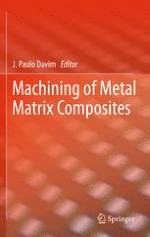
2012 | OriginalPaper | Buchkapitel
1. Mechanics and Modeling of Chip Formation in Machining of MMC
verfasst von : Yung C. Shin, Chinmaya Dandekar
Erschienen in: Machining of Metal Matrix Composites
Verlag: Springer London
Aktivieren Sie unsere intelligente Suche, um passende Fachinhalte oder Patente zu finden.
Wählen Sie Textabschnitte aus um mit Künstlicher Intelligenz passenden Patente zu finden. powered by
Markieren Sie Textabschnitte, um KI-gestützt weitere passende Inhalte zu finden. powered by